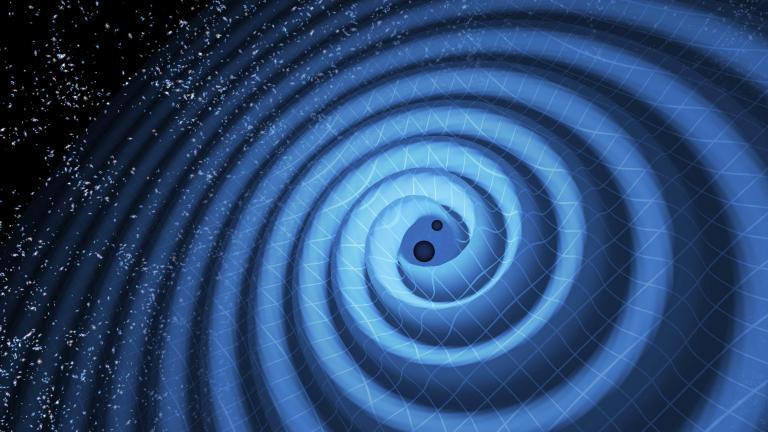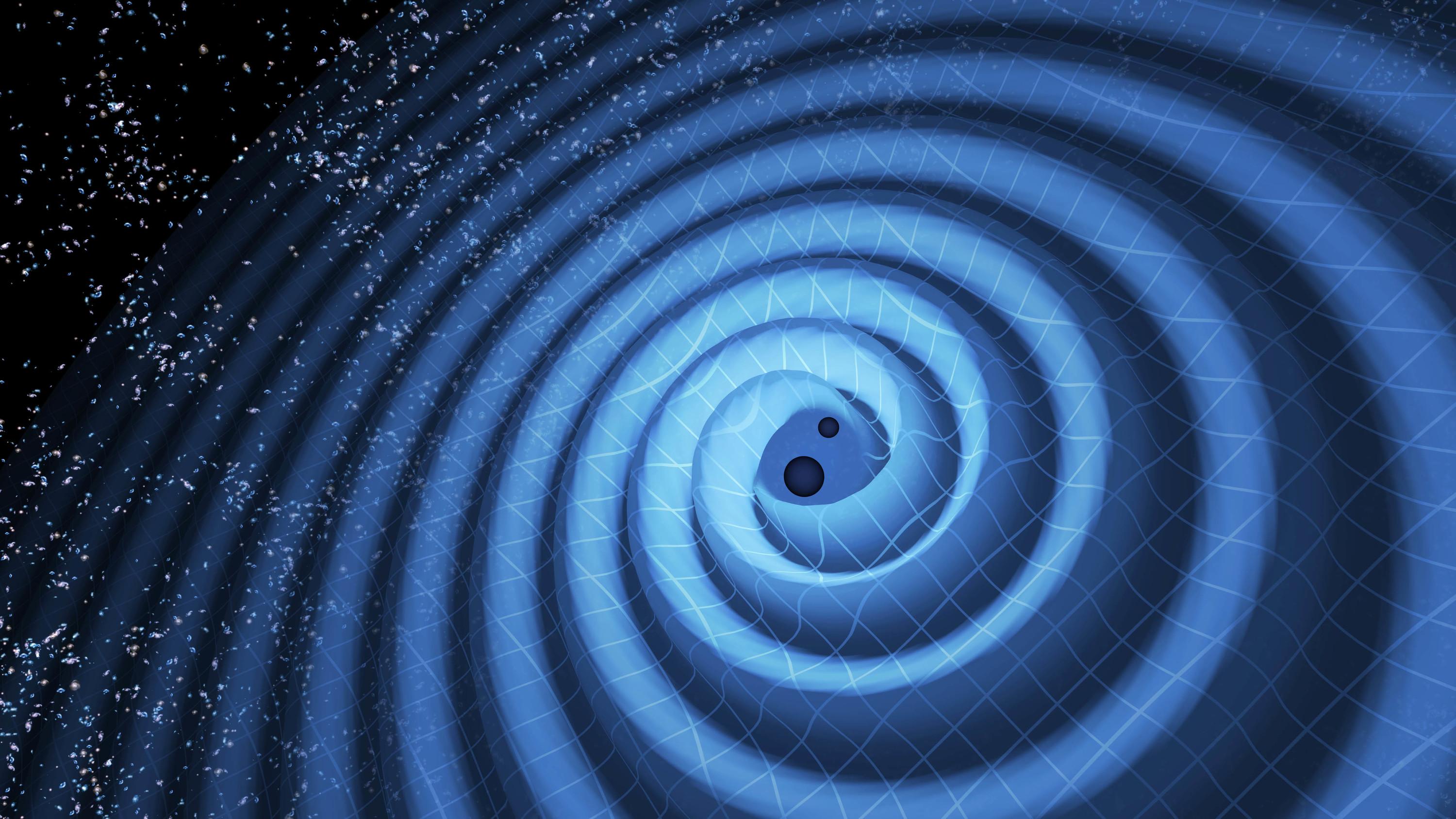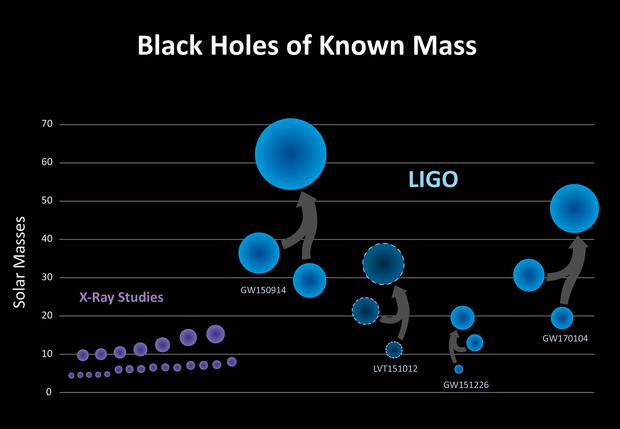 Blog
BlogPromises of some gravity
It's two years since the first black hole merger event was detected by LIGO, the Laser Interferometer Gravitational-wave Organisation. What's next?
 Blog
BlogIt's two years since the first black hole merger event was detected by LIGO, the Laser Interferometer Gravitational-wave Organisation. What's next?


LIGO's first detections
Image Credit: LIGO/Caltech/Sonoma State (Aurore Simonnet)
It's two years since the first black hole merger event was detected by LIGO, the Laser Interferometer Gravitational-wave Organisation. What's next?
What's next is a lot more detections, certainly of binary black hole mergers, probably of neutron star binaries, and maybe even signs of the elusive pulsar-black hole binary system. I've been listening to the talks and discussion at a Royal Society meeting on 'The promises of gravitational-wave astronomy' and it is indeed remarkably promising. Advanced LIGO has just finished its second data run, and has added VIRGO to the two aLIGO interferometers in the US, right away bringing down the large area of the sky where the signals originate. So far, gravitational waves from three binary black hole mergers have been picked up; those in the know were notably tight-lipped about detections yet to be announced (although they did keep smiling, which might mean something). As aLIGO operates, its sensitivity is getting better; when two more detectors are added, KAGRA in Japan and LIGO India, both the sensitivity and rate of detections will improve, as will the triangulation of sources on the sky. By the time aLIGO is fully operational, with these five detectors, in the 2020s, gravitational wave astrophysics will have arrived, with enough detections to undertake population studies for binary black holes, for example, and the potential to uncover fundamental physics in those extreme environments, notably to give some shape to the equation of state for neutron star matter.
This will give a new information stream about the high energy universe, independent of data from electromagnetic radiation. The potential is huge; combining gravitational wave data with electromagnetic data will enhance both fields. There is a lot of interest at the moment in new instruments such as the Large Synoptic Survey Telescope and the Square Kilometre Array, in part because of their potential to discover transient sky objects, as part of the transformation from snapshots of the sky to multi wavelength movies. Transient events are what LIGO has found so far, and there will be more. So much more information will come from matching the source of gravitational waves to electromagnetic sources, for those events that give out an electromagnetic signal. Binary black holes may not do so; neutron star binaries should do so. But we need facilities to observe everything we can, at all wavelengths, for these gravitational wave source events. Facilities such as the European Extremely Large Telescope and the Square Kilometre Array will be coming on stream at the same time, in the 2020s, but gamma ray and x-ray instruments are less certain. And a dedicated x-ray space observatory to pick up these compact object mergers, for example, will take easily a decade and a lot of money to build. But that is one of the things we need to truly fulfil the promise of gravitational wave astronomy.
This meeting, however, concerned the promises of this new field. Quite a few of those promises have been made by those planning and building LIGO over the past decades, as part of the relentless but long-term process of building machines able to detect these subtle signals. They promised that they could build these astounding machines, able to detect a length change equivalent to the thickness of a human hair in the distance from Earth to Alpha Centauri. Now, with the first detections, they've made good on those promises, and expect to continue to do so, in spades!
And the discovery potential of this technique has been stamped on their results from the start. The black holes that they found from their mergers have had greater masses than expected, falling in the few tens of solar masses range. These are stellar mass black holes, but they are surprisingly massive. How did they form, and how did they come into such close binary systems? Are they primordial black holes? The next few years are going to produce a lot more examples and demonstrate how these systems and their progenitors fit into the distribution of stars accessible from conventional electromagnetic astronomy. If we can get the right instruments looking in the right places, and if we can continue the many staggering science and engineering innovations that have made aLIGO possible, then what's coming next is a whole new world of multimessenger astrophysics. I can't wait...
If you would like to submit an article to A&G Forum then please go here.